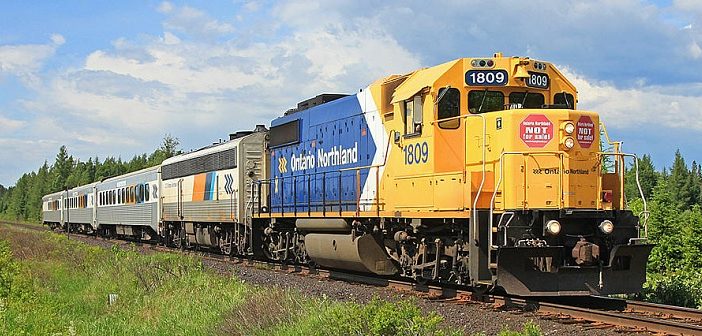
Transport Action welcomes the long-awaited Initial Business Case published by MTO and Ontario Northland. We are encouraged that the Government of Ontario plans to move forward with the restoration of passenger rail service between Toronto, the Muskoka region, and Northeastern Ontario based on the clear social equity need for this service and whole-economy spin-off benefits for the north. However. we note that “a potential in-service date in the mid 2020s” is well behind the election promises made by the government. We urge the Province to move ahead promptly on the many key steps still needed for implementation.
In order to move swiftly to implementation, MTO must robustly support the negotiation of a train service agreement with CN for operations between North Bay and Toronto. We had hoped to see such an agreement concluded by this stage, with known costs for necessary additional passing tracks or upgrades. As noted in the IBC, an agreement that protects on-time performance and ensures punctual train meets should reduce the need for costly additional infrastructure, as well as being vital to the passenger experience.
The proposed service integration with Ontario Northland’s bus network will ensure that the train improves the level of service for communities across the northeast and will serve as a best-practice example to other Canadian regions.
Tourism revenues that would be attracted by a high-quality service are not analysed in the report, but would represent millions of dollars in whole-economy benefits and a significant boon to northern Ontario businesses. Domestic tourism within Canada is likely to be strengthened in the next couple of years as families seek alternatives to long-haul travel, and once international travel resumes the global market slow-travel opportunities involving rail travel, cultural heritage, and outdoor pursuits is likely to rebound strongly, attracting a high-spending early-retired demographic.
The report does not address the selection of rolling stock in any detail, although it mentions the possibility of a cab car for bidirectional operation, which may have limited additional utility on a long-distance service of this nature, unless the train reverses at Timmins to continue to Cochrane.
Rolling stock procurement is a critical step in service delivery, and with order books full at most north American car builders, a more proactive approach by the government to securing new equipment would have paid significant dividends. It may be possible to accelerate the timeline for service restoration by leasing equipment in the interim until brand new cars can be ordered and delivered.
Selection of suitable new rolling stock will be critical to the long-term success of this service. In addition to providing affordable seats and accessible accommodation, the rolling stock should also offer a service level suited to the tourism market, which means good all-round visibility, sleeping accommodation and decent catering. The suggestion of a “no amenities” service level in the initial business case is concerning, morning coffee being the least Canadians are going to expect on an overnight train. After making the investment to get the train running, going cheap on amenities would seriously inhibit the success of the service.
The equipment must also ride well across the range of track conditions in northern Ontario. A common complaint about the rebuilt single-level commuter cars used prior to 2012 was that ride quality was highly variable, which caused mobility impaired passengers difficulties moving about the train for refreshments or to the washrooms.
With both Amtrak and VIA Rail in need of new long-distance equipment in the current decade, and Amtrak being likely to select single-level design due to accessibility requirements, there is an opportunity to develop a new generation of single-level overnight and long-distance equipment. Leadership on this file by the governments of Ontario and Canada would increase the chances of a share of that work being conducted in Thunder Bay.